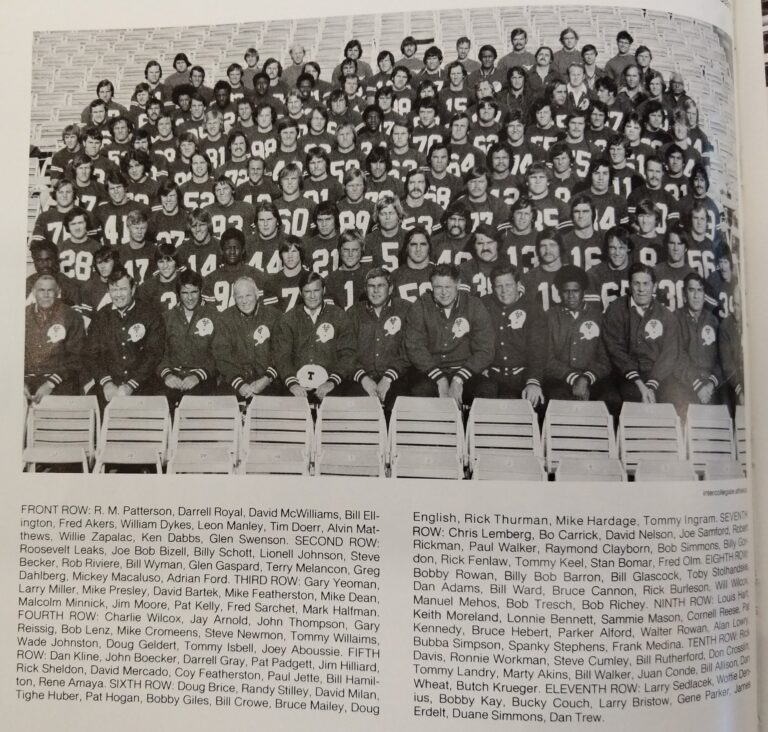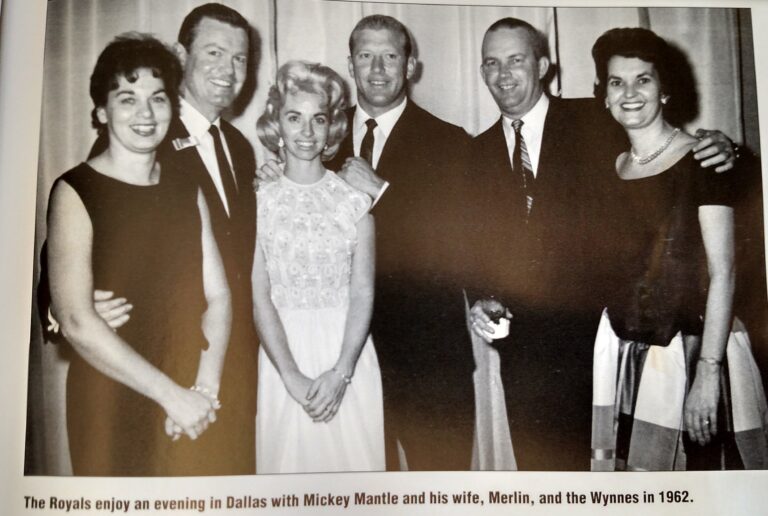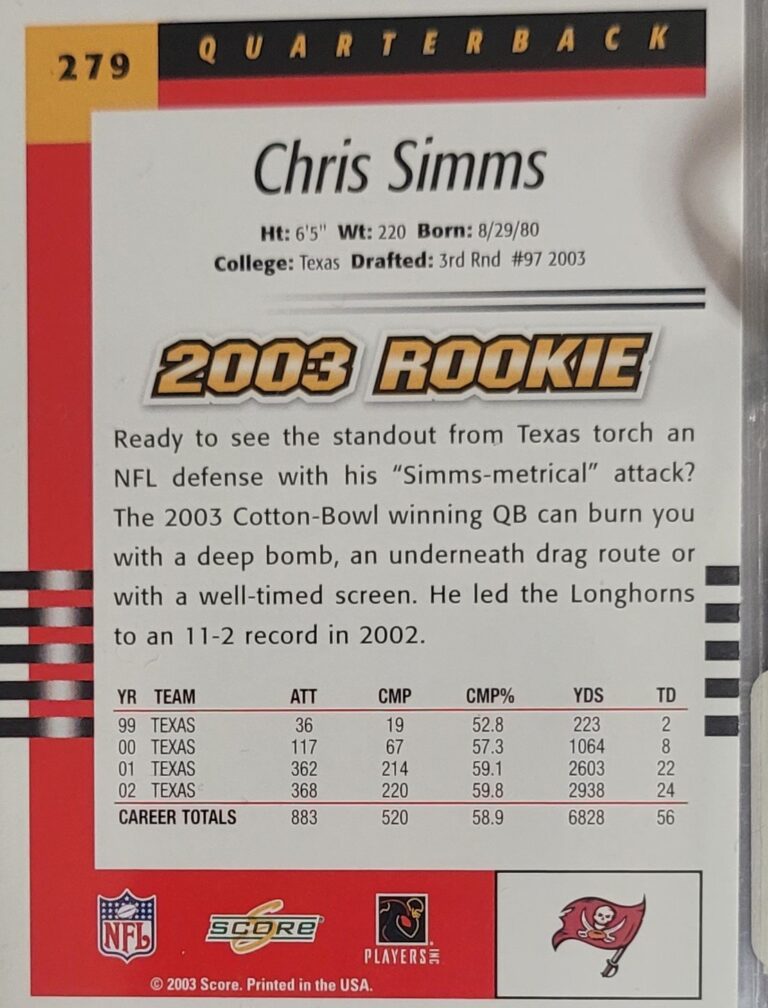THE “NATIVE” LANGUAGE OF LONGHORNS
by Larry Carlson https://texaslsn.org

THE “NATIVE” LANGUAGE OF LONGHORNS
by Larry Carlson https://texaslsn.org
The natives are restless. No, not homeless but, at least according to most of the media, incorrectly situated. Let me explain.
We all have pet peeves. Maybe you wince when others say “I could care less,” when you know they mean they don’t care…which would be, “couldn’t care less.” Perhaps it grinds your gears when someone says “supposably” instead of supposedly.
For me, it’s this one in sports journalism. I’d say 95 percent of all sportscasters and writers tell us that a player is a native of fill-in-the-blank, when they mean to refer to the city in which that player attended high school. Sure, plenty of athletes, just like many of us in all cross-sections of life, didn’t fall far from the tree. They graduated from high school in the city in which the stork brought them. But not all of them.
Allow me a few examples. For the last three years, everybody heard that Quinn Ewers is “a native of Southlake, Texas, where he played at Carroll High.”
But those sports media types spread misinformation. Ewers is a native of San Antonio. And he spent his childhood years with his family, living in Pleasanton, 35 miles south of the Alamo City.
Here’s a fun fact that’s even more illustrative of the erroneous picture painted by media folks calling each player a “native” of his school’s city. Andrew Mukuba, recently a second-round pick of the defending Super Bowl champion Philadelphia Eagles, starred last fall for Texas after transferring from Clemson. His move was a boon for the Horns, and made sense because Mukuba played high school ball at LBJ High, not far from the UT campus. Naturally, he was constantly referred to as “an Austin native.”
Guess again, Joker.
Mukuba is a native of Zimbabwe, hardly a hop, skip, and jump from Lady Bird Lake. He lived in Africa until he was nine, when his family landed in Austin after being granted asylum.
A pretty interesting story, had most of the football media understood the meaning of “native.” Duuude, it’s kinda like the place where you were born.
For Kiki DeAyala, that birthplace was Miami. The all-time sack-man at The Forty Acres (with 40.5 in his career and an unfathomable 22.5 in ’82) was recruited out of Houston’s Memorial High in the Spring Branch ISD. But Kiki — whose parents fled Fidel Castro’s communist regime in Cuba — was hardly a Houston kid early on. His father, Rafael Julian Luis DeAyala, served with the Brigade 2506 invasion force at the Bay of Pigs in 1961, the year of Kiki’s birth.
Kiki’s family later resided in Rio de Janeiro and in Dallas, where young Kiki was a swimming champion. Then came Houston and football.
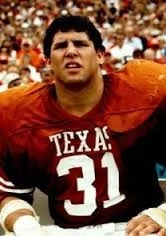
Kiki DeAyala- from Miami 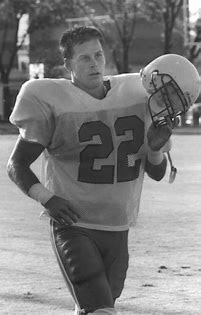
John Hagy from Okinawa 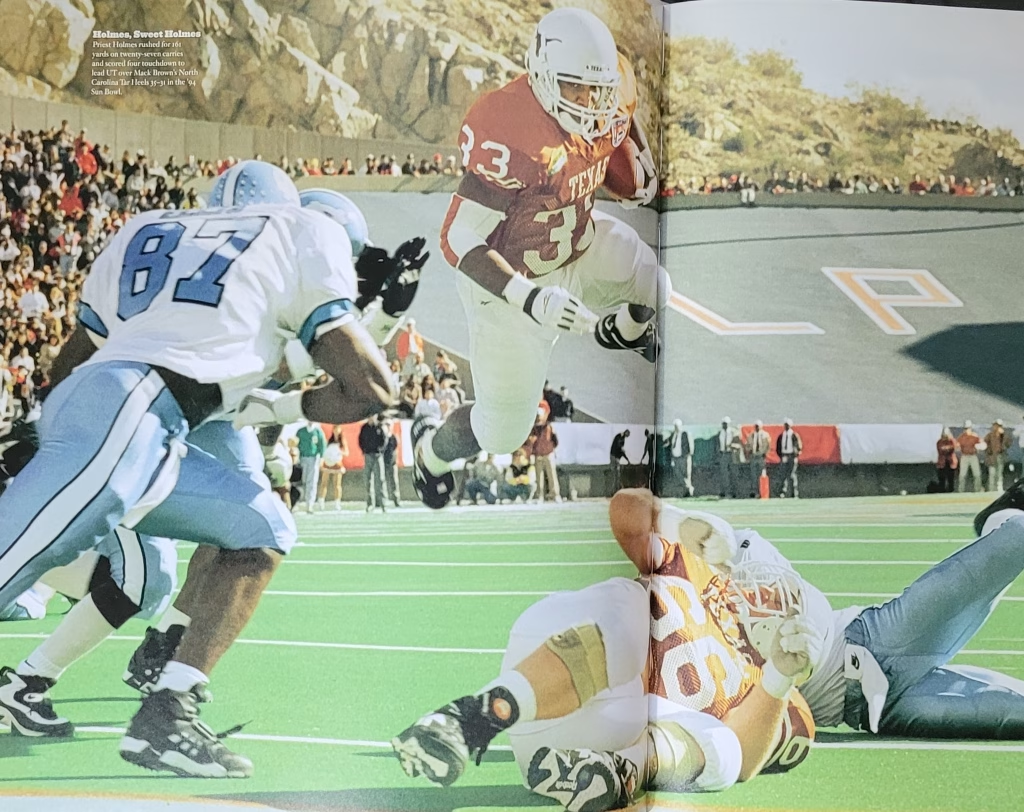
Priest Holmes from Fort Smith, Ark . 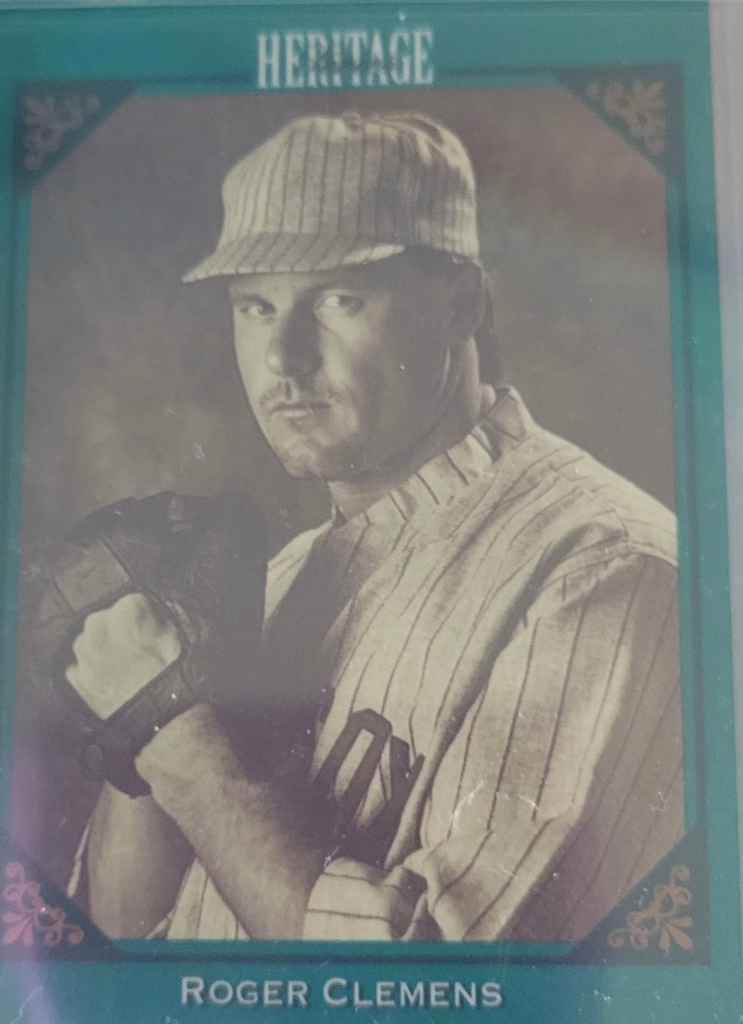
Roger Clemens from Dayton Ohio 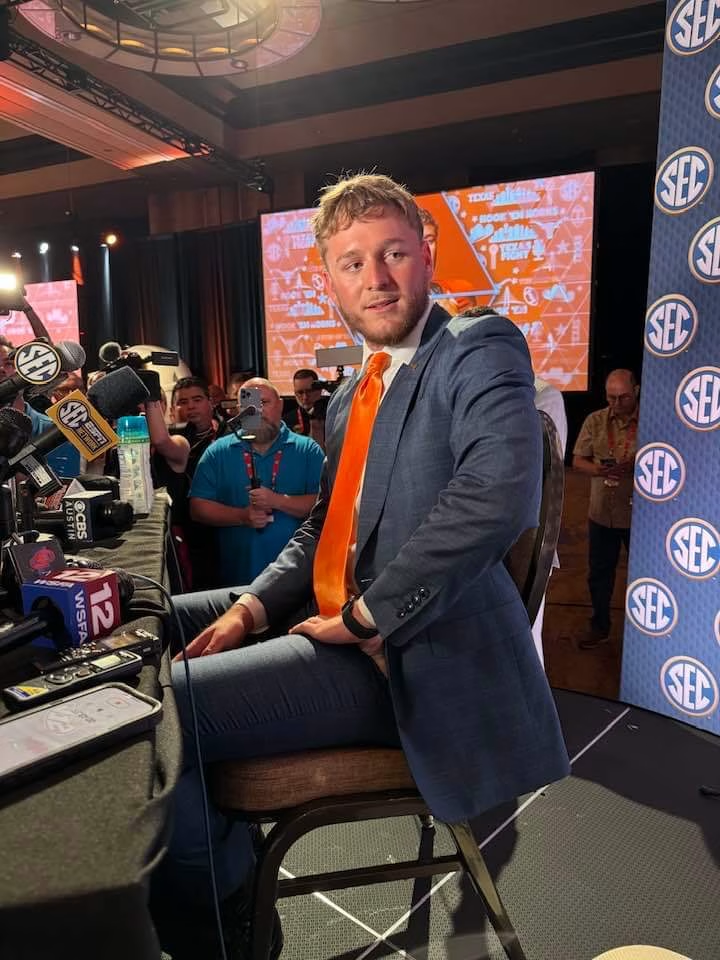
Quinn Ewers- from San Antonio 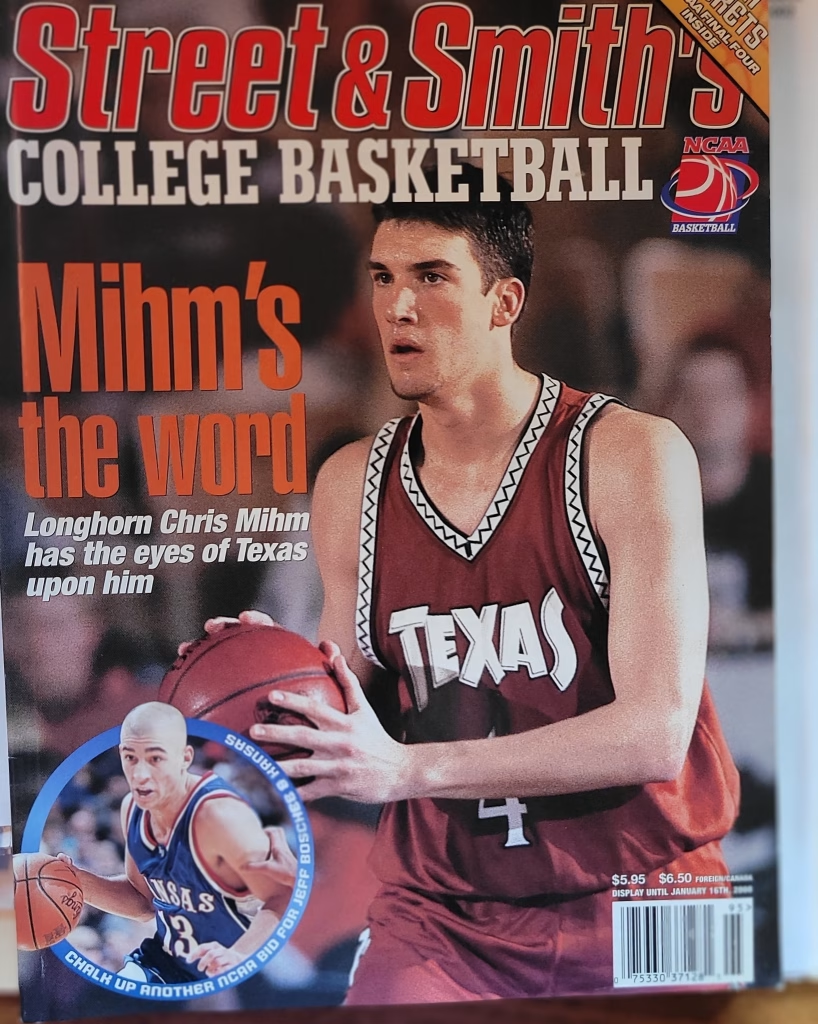
Chris Mihm from Milwaukee, Wi. 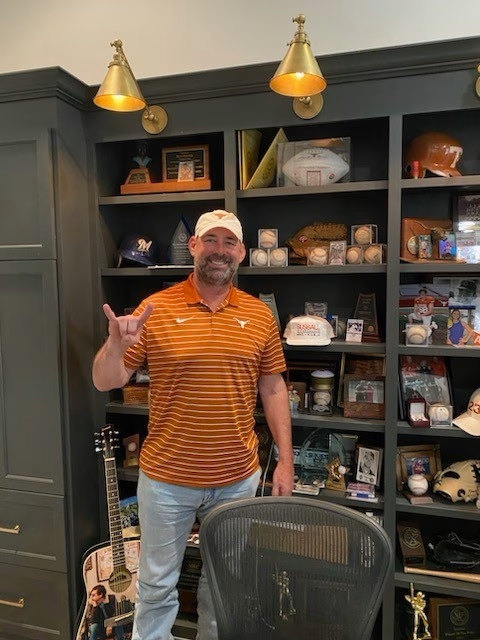
Brooks Kieschnick- from Robstown, Texas
Then UT, then the Houston Gamblers and Cincinnati Bengals. Too many injuries, too early. But the Miami native has been a huge success in business. He’s the developer of “The Islands of Rockport” and loves life down in Aransas County but told TLSN he still calls Houston “home.”
Hard-hitting John Hagy was a fiery DB for Texas (1984-87) and was the Southwest Conference’s Defensive Player of the Year in ’87 before playing in the Super Bowl for Buffalo. He arrived at UT,fresh from two-way glory days at San Antonio’s John Marshall. John was born far from the Alamo City, though. Count him as a native of Okinawa.
Another guy who starred for SA’s Marshall Rams, Priest Holmes, is a native Arkansan, born in Fort Smith.
Okay, some more examples of restless natives in burnt orange:
Two of the greatest baseball players in the History of Longhorn Sports were recruited out of their high schools in Corpus Christi.
Both Burt Hooton and Brooks Kieschnick, of King High and Carroll High, respectively, have had their numbers (20 and 23) retired at UT.
Neither is a native Corpus Christian. Hooton was born in Greenville, up near the Oklahoma border. Kieschnick was born just west of Corpus in Robstown, famed for a formidable Robstown High Cottonpickers baseball program. And for Joe Cotten’s Barbecue, the legendary spot on Highway 77 that, tragically, burned to the ground more than a decade ago. But let’s get back to natives.
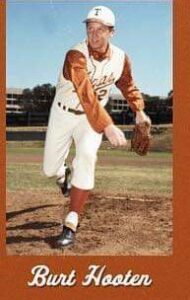
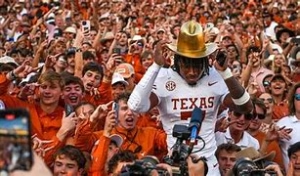
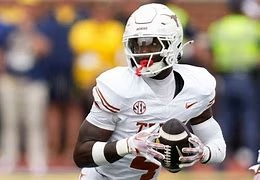
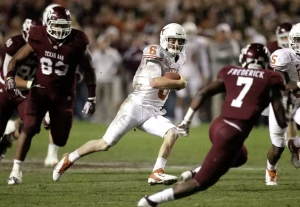

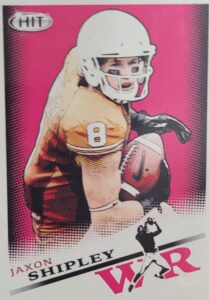

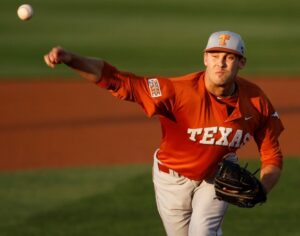
Roger Clemens is a famous Texan, that’s for sure. Most experts will place him on the all-time list of top ten pitchers in major league baseball annals. “The Rocket” first gained hardball recognition at Houston’s Spring Woods High before tearing it up at San Jacinto College (North) and taking his talents to Disch-Falk Field. For years, Clemens has been cited as “a Houston native.”
Well, Roger’s definitely a Houston resident, a Houstonian, a Houston guy. But he’s an Ohio native. Yep, he was born in Dayton and was a yankee before he was a Yankee. Or a Blue Jay or Astro or Red Sox player. He got to Houston from the Buckeye State as a young teen.
Want a UT few basketball greats to test yourself on? The lone Longhorn inducted thus far into the Naismith Memorial Basketball Hall of Fame, Slater Martin, graduated from Jeff Davis High in Houston, having led Davis to state titles in 1942 and 1943. After a standout career at Texas he was a seven-time All-NBA selection and earned five championship rings. But he was born in tiny Elmina, just south of Huntsville. It was once a thriving sawmill town. Today it is considered a ghost town. Slater was no doubt the most accomplished Elmina native.
Geographically at least, Martin was at least semi-close to having been a “Houston native.” Chris Mihm, the seven-foot Westlake High grad who starred for the Horns from 1997-2000, was definitely not an Austin native. He was born in Milwaukee.
Back to football Longhorns, it’s fun to note that the great scatback, Jimmy Saxton, All-American in ’61 from Palestine in East Texas, was a native of enemy soil. Saxton was born in Bryan, of all places, but when asked about Aggies while running wild for Texas, once remarked, “I don’t associate with those people.”
Steve Worster, the incomparable wishbone fullback, was from Bridge City in the Golden Triangle of Southeast Texas, just a big gator’s tail from Louisiana. The late, great “Woo” lived much of his childhood in Bridge City before leading the BCHS Cardinals to the ’66 state 3A championship. Later, he returned to live and work near his old home. But he was a native of Rawlins, Wyoming.
America’s first All-American wishbone quarterback, Marty Akins, hailed from Gregory-Portland High, in Portland, just across the bay from Corpus Christi. But Marty was the son of high school coaching Hall of Famer, Ray Akins, and coaches move their families frequently.
Early on, Coach Akins was the boss for pigskin programs in tiny Lometa and Goldthwaite. Marty was born in nearby San Saba.
Colt McCoy is another son of a coach. He played for his dad, Brad, at little Tuscola’s Jim Ned High, twenty miles south of Abilene. Contrary to what you often read and heard, Colt is not a Tuscola native. He’s not even a native Texan. He just got here as soon as he could. Colt is a native of Hobbs, New Mexico. His brother, Case — author of notable quarterbackin’ wins over OU and A&M — is indeed a native Texan, born in Abilene. But you likely heard we was a Graham native, since that’s where he first got noticed as a high school hoss.
You might have also heard — once or twice, maybe a thousand times — that Colt McCoy’s favorite receiving target, Jordan Shipley, was also his roommate at Texas. Well, Shipley, as you likely also know, grew up as a coach’s son. Jordan starred for Bob Shipley at Rotan High (The Fightin’ Yellowhammers), then moved on and became a blue-chipper at Burnet. Jordan Shipley is a native of Temple. His brother, Jaxon, came out of Brownwood High but he, too, is a Temple native. Temple is a regular hotbed for native Horns, as it turns out.
All-America tackle Bob Simmons (1975) was born there and played for the THS Wildcats. Taylor Jungmann, the sensational Texas pitcher whose jersey number is retired over at “the Disch” played high school ball in Rogers, then in Georgetown. Born in Temple, though.
(Note: NFL immortal, Slingin’ Sammy Baugh of Sweetwater High — and of TCU, I know, I know — is yet another Temple guy.)
Well, it’s about time to wrap up all this talk of restlessness and the sports media’s abuse of the “native” term. And granted, plenty of guys actually are natives of the cities they’ve been synonymous with.
Tommy Nobis was a San Antonio native. James Street was born in Longview. Vince Young, a born and bred Houstonian. And, yes, Arch Manning is a native New Orleanian.
Here’s one more nugget, though, regarding a headliner from The History of Longhorn Sports. Bobby Layne, arguably THE all-time
“Mr Everything” figure in UT football and baseball immortality, is well-known as a Highland Park guy. Layne and Doak Walker made history as leaders of the Scots’ football team. Boys of big city life who split up for college but were later reunited in Motor City, winning NFL titles together for the Detroit Lions in 1952 and ’53, with Layne leading the boys in “Hawaii Blue” to another title in 1957.
But the point here is, Bobby Layne was not a native of Dallas. Or University Park. Fort Worth? Lubbock? Waxahachie? Give up?

Bobby Layne is from Santa Anna
The quarterback who wore number 22 was a native of Santa Anna, not far from Coleman in West Central Texas. Not quite the posh surroundings linked to Highland Park residency.
“And now…”, as broadcaster Paul Harvey, who probably knew the right usage of “native” used to say, “…you know the rest of the story.”
(TLSN’s Larry Carlson is a member of the Football Writers Association of America. A San Antonio native, he was born less than a mile from The Alamo, at Baptist Memorial Hospital.)
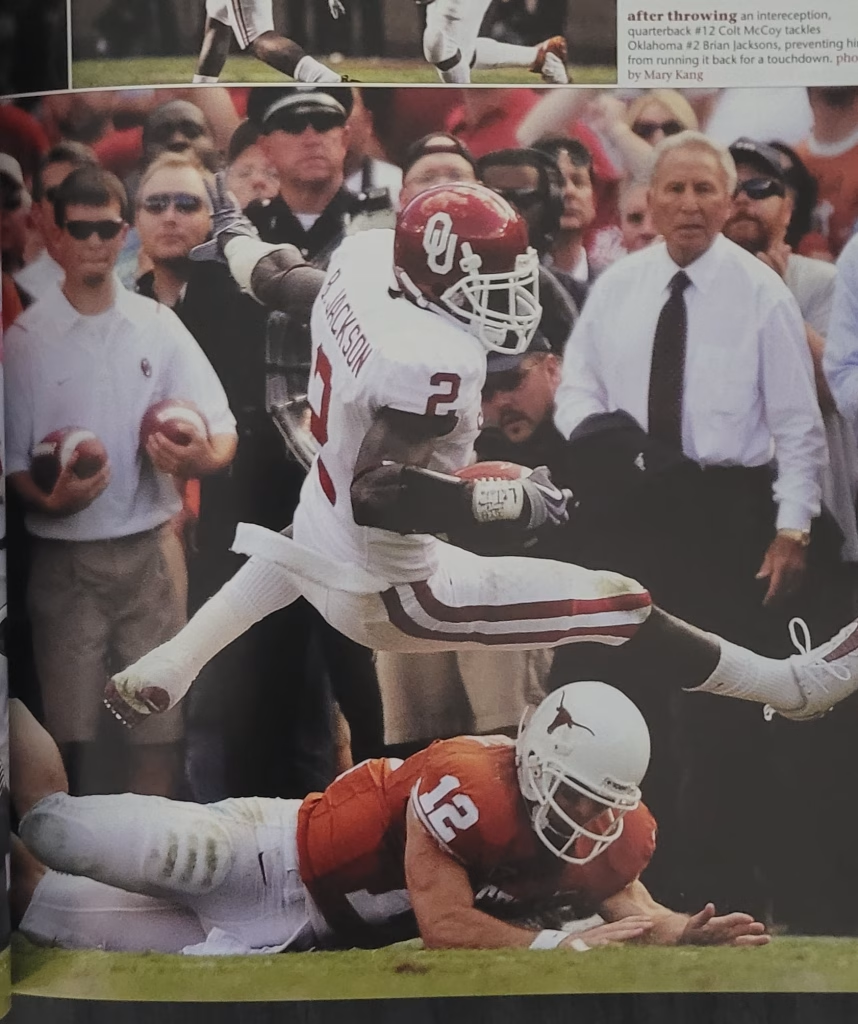
Colt McCory from Hobbs, NM 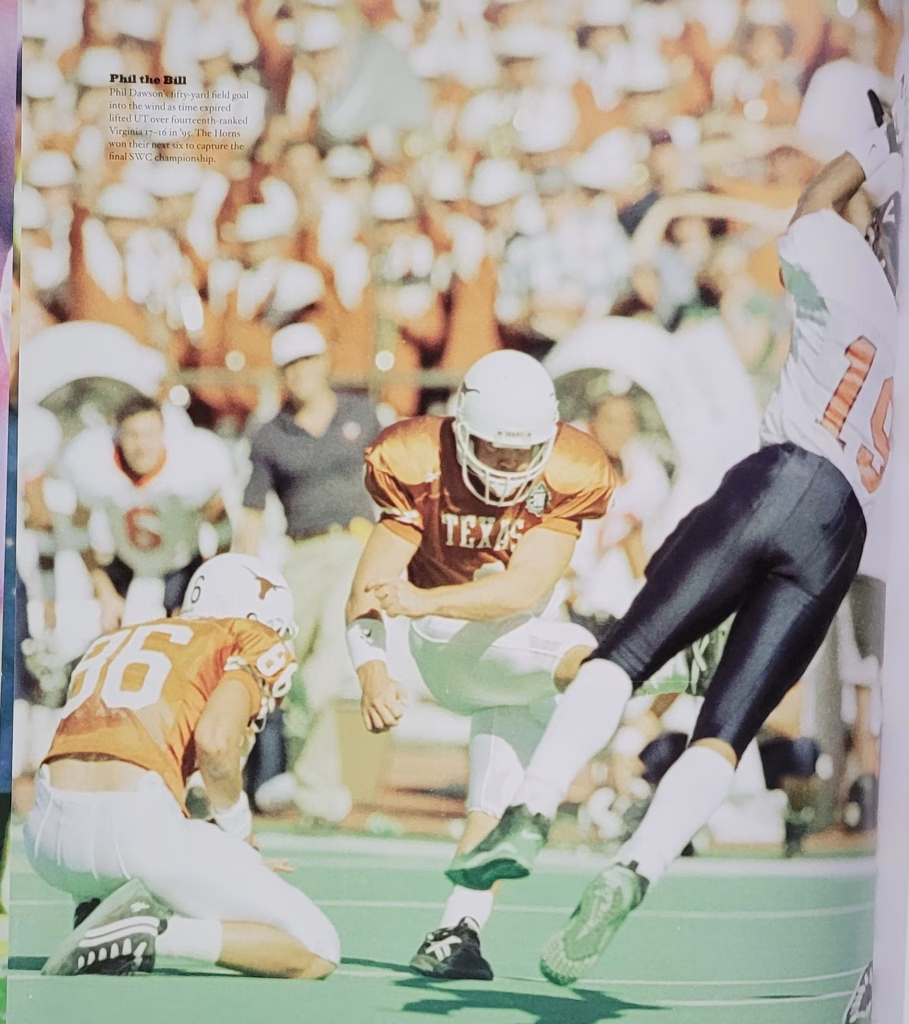
Phil Dawson from West Palm Beach 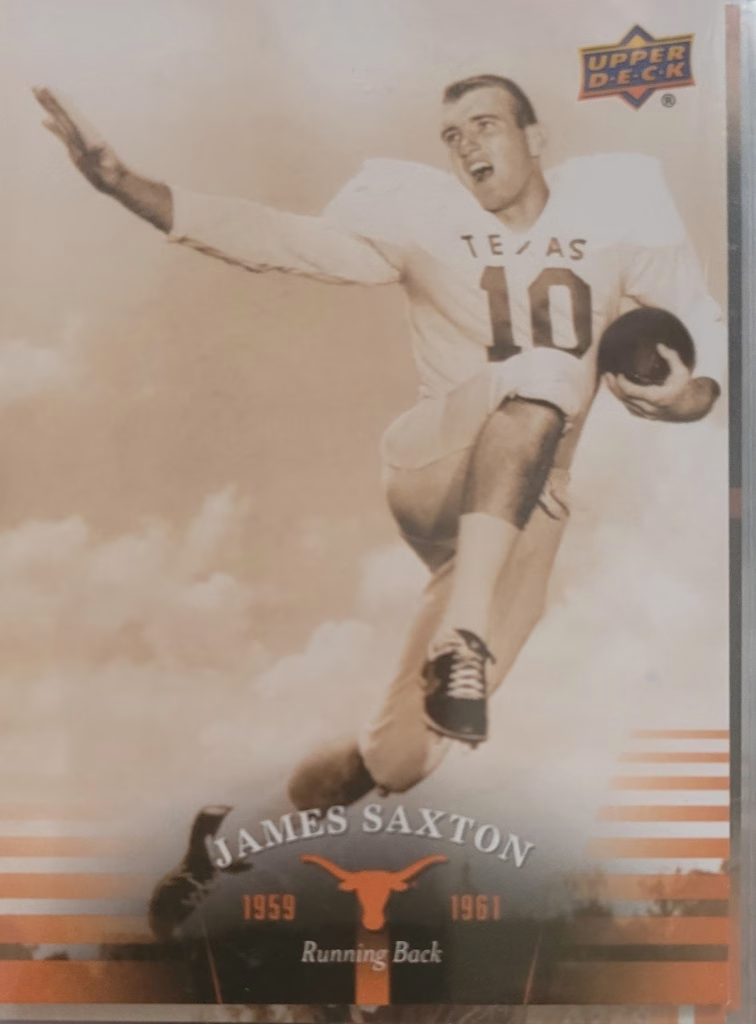
James Saxton from Bryan, Tx. 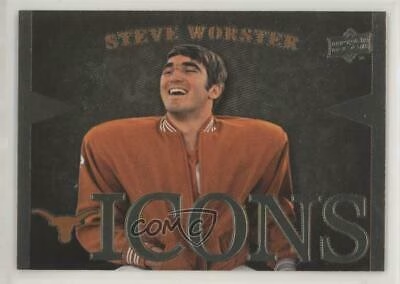
Steve Worster from Rawlins Wyoming 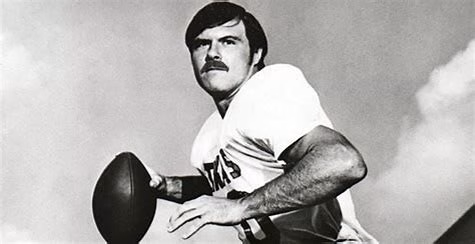
Marty Akins from San Saba, Tx 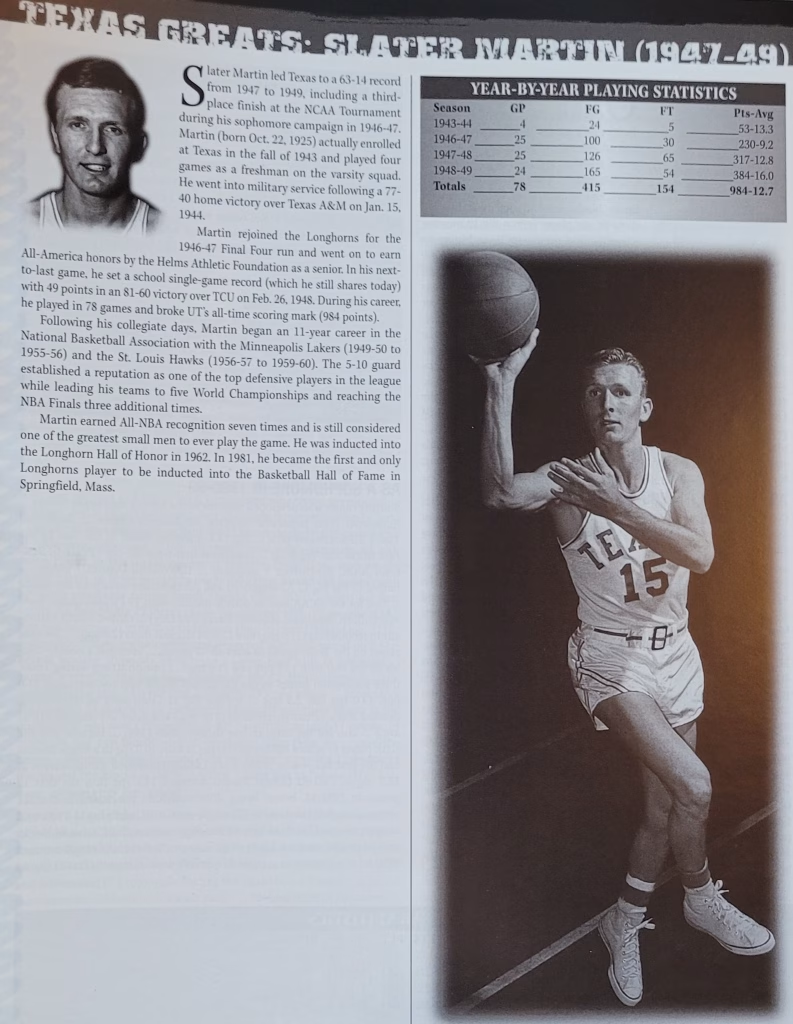
Slater Martin from Emina, Tx
(TLSN’s Larry Carlson is a member of the Football Writers Association of America. A San Antonio native, he was born less than a mile from The Alamo, at Baptist Memorial Hospital.)
